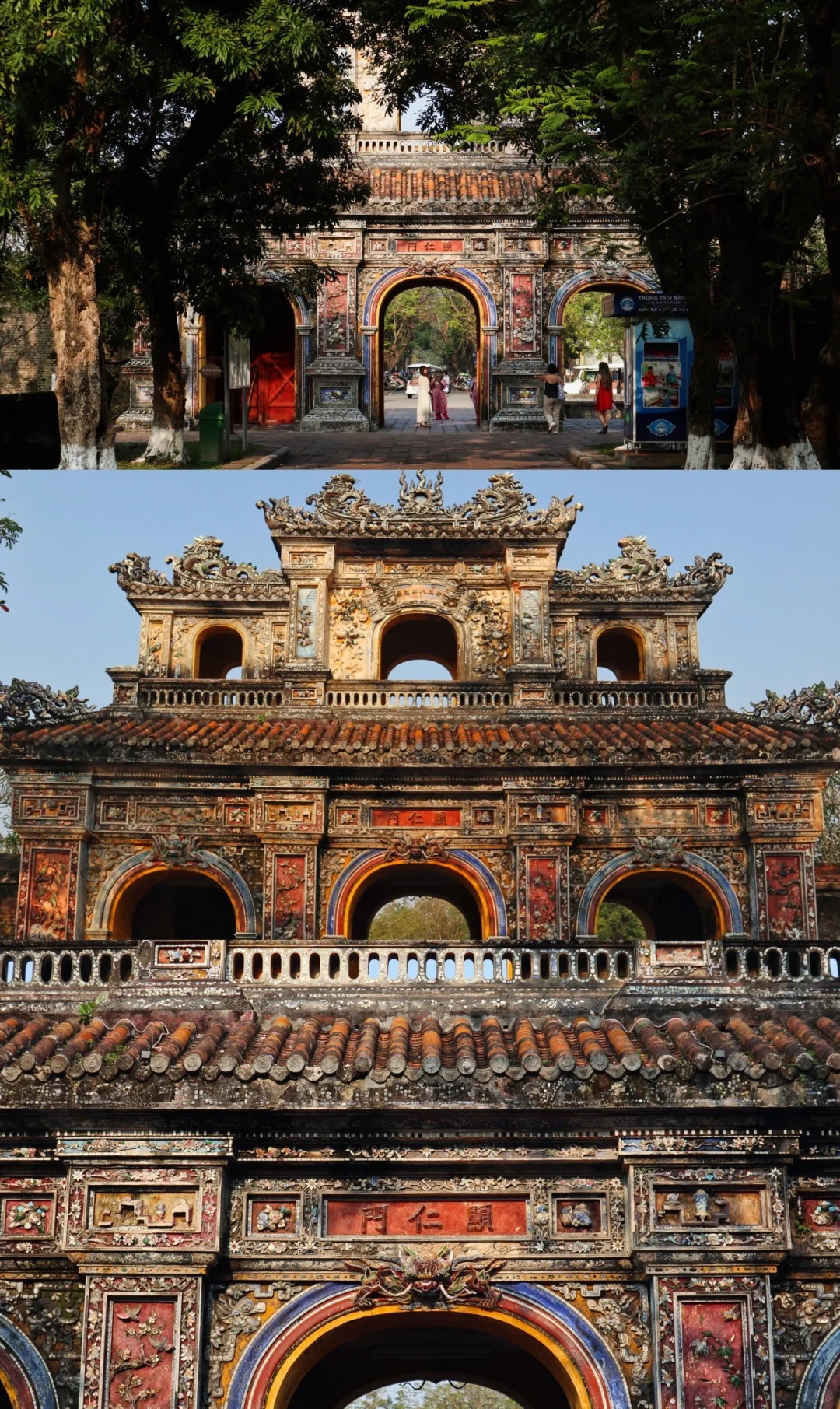Hue ‖ Exploring the Royal Citadel and Tombs of Vietnam's Last Dynasty
The Nguyen Dynasty was the last feudal dynasty in Vietnamese history. After unifying Vietnam, the Nguyen monarchs made Hue their capital, and palaces and temples were subsequently constructed. Thus, when visiting Hue, you can see Vietnam's Forbidden City . 🏛 Although it's quite compact compared to Beijing's Forbidden City, Hue's Imperial City is filled with intricate and ornate details, as well as vibrant colors. The exterior decorations made with porcelain shards left a particularly deep impression on me. 🌟 My favorite spot within the Imperial City is the Thieu Tri Garden (Figures 5-6), a tranquil and beautiful garden. 😌 To the west, there's also a very lively pond worth visiting. It has to be said, the aesthetics of Vietnam's kings and craftsmen were quite on point. 🌺🌿 ● As the last feudal dynasty in Vietnamese history, the Nguyen Dynasty, like the Qing Dynasty, faced aggression from Western powers. Although the Nguyen Dynasty had taken a hardline stance against France, it was gradually defeated under the overwhelming military might of France. As the capital, Hue naturally became the focus of Vietnam's modern political and diplomatic stage. With the opening of its doors, Western aesthetic styles also entered and subtly influenced Vietnam. Some late Nguyen Dynasty palaces and royal tombs incorporated Western elements on top of Vietnamese architecture, presenting a mixed aesthetic (such as the Canh Dinh Palace in Figure 3 and the Khai Dinh Tomb in Figure 10). 🕍 ● Scattered around Hue city are more than a dozen royal tombs. Due to time constraints, we only visited the Tu Duc Tomb Hien,Figures 8-9) and the Khai Dinh Tomb . The former is a tomb with a beautiful lake surrounded by lush pine forests. However, as it is a representative tomb, the core area is always crowded with tourists. But visiting the non-core areas is quite peaceful. The latter, as mentioned above, is a tomb that combines Vietnamese and European elements. Although much smaller in area than the former, it is by no means inferior in terms of exquisiteness. Especially the final part, the Tien Dinh Palace, is truly heavenly in its beauty. 😯😯 ● Additionally, the An Dinh Palace in Hue city (Figure 11) is worth a visit. 🚙 Itinerary: Hue is located in central Vietnam and can be reached by overnight bus 🚌 or plane ✈️. There are many places worth visiting in Hue, requiring at least two full days. It's best to plan a three-day, two-night trip. ① On the first day, arrive in the morning and visit the Royal Citadel. ② On the second day, visit the tombs in the morning. Since there are more than a dozen tombs in the southern suburbs of Hue, it's best to choose the representative ones to see. The first choices are the Hien陵 and An陵 tombs we visited. In the afternoon, visit An Dinh Palace in the city. ③ On the third day, visit Thien Mu Pagoda in the morning. In the afternoon, you can return to Hanoi or head to Da Nang. 😘😘 If you've read this far, please give a like + bookmark and follow. Please. 🙏 #HistoricalArchitecture #Vietnam #Hue #ForbiddenCity #CulturalAttractions #Tombs #History



